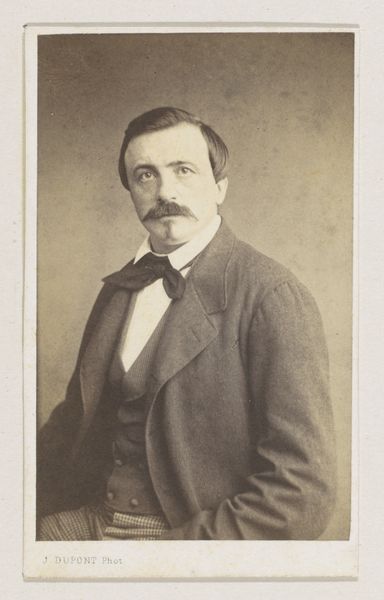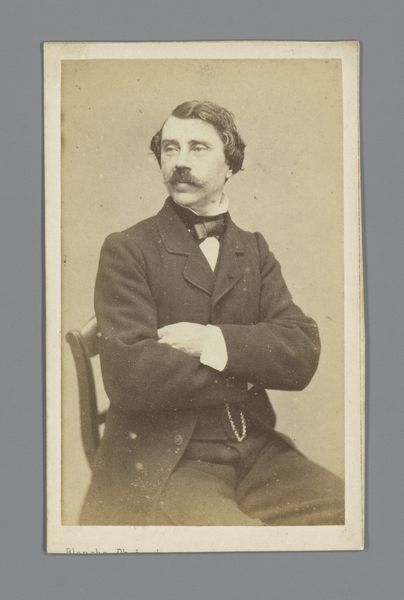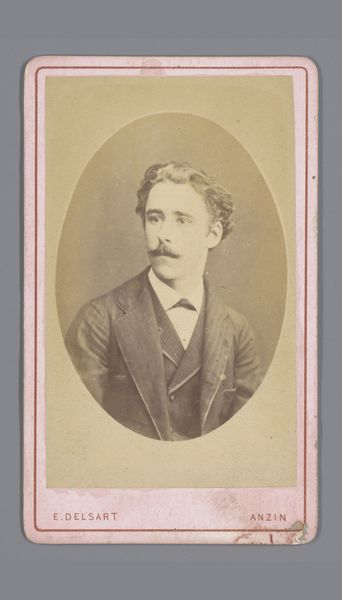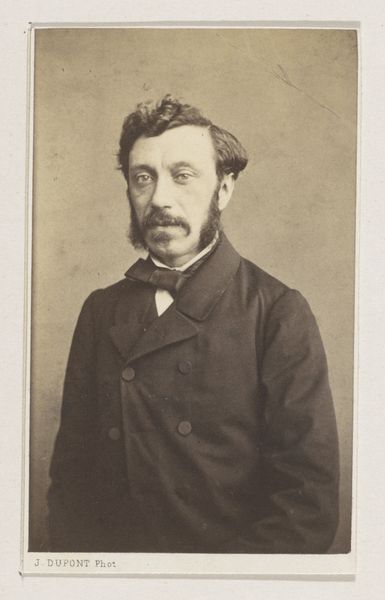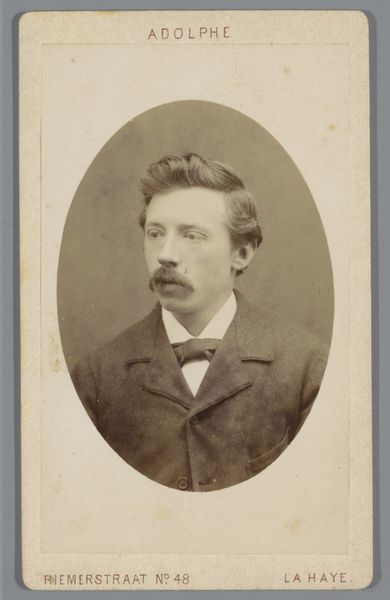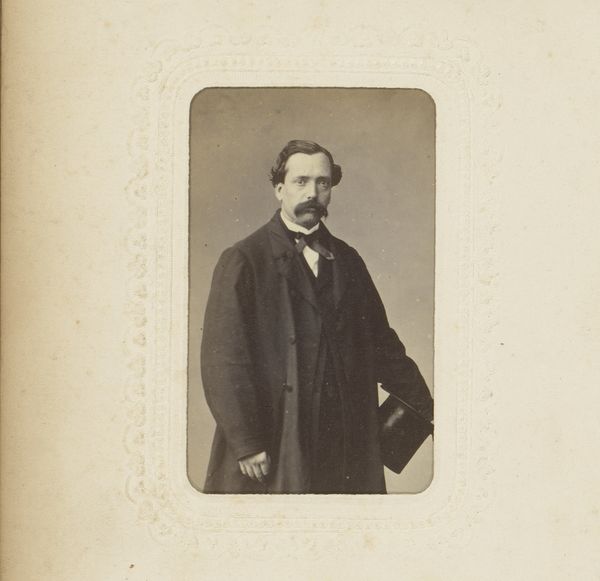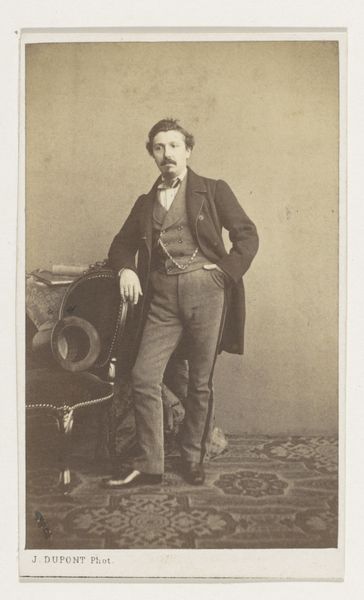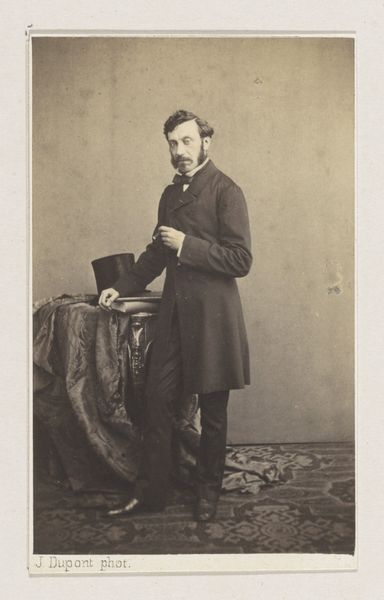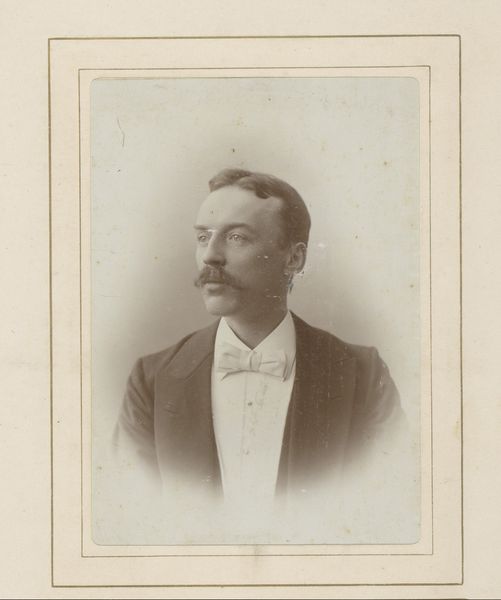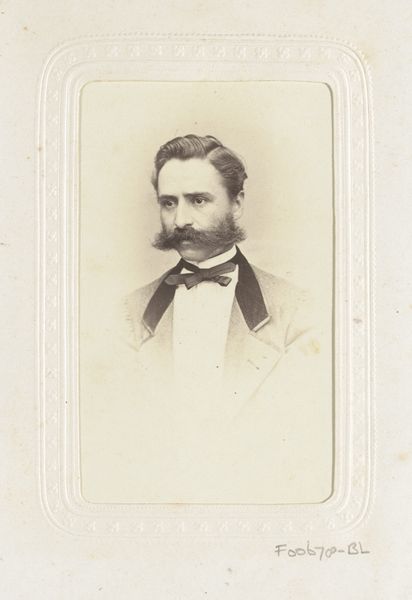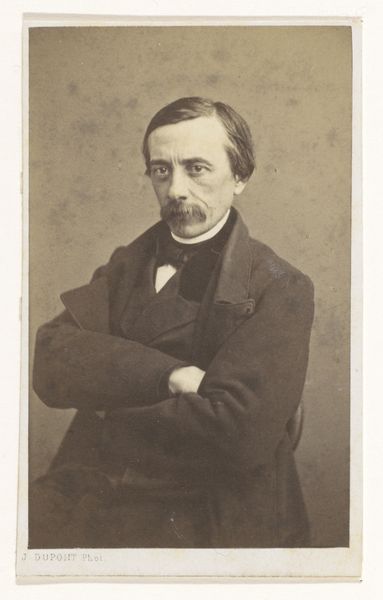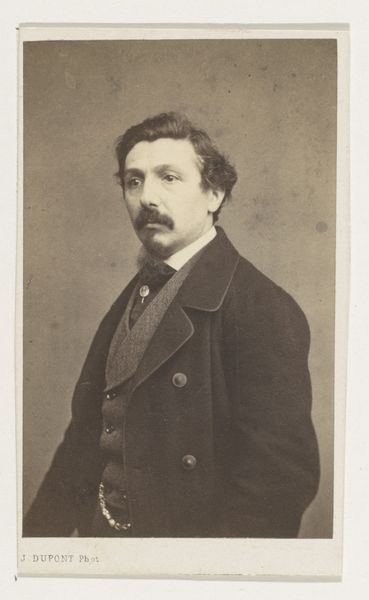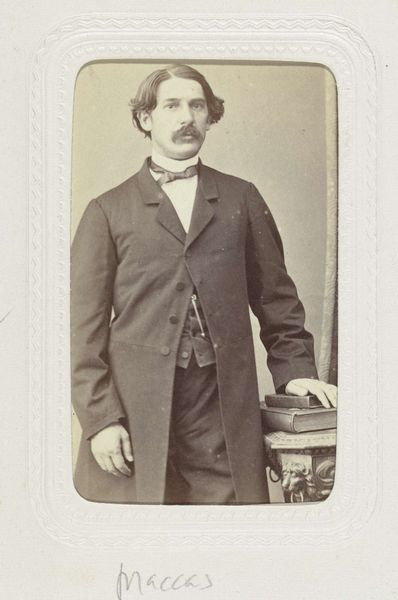
photography, albumen-print
#
portrait
#
photography
#
albumen-print
Dimensions: height 100 mm, width 61 mm
Copyright: Rijks Museum: Open Domain
Curator: This portrait, taken in 1861 by Joseph Dupont, captures the painter Jozef Cornelius Correns in a half-figure composition, an albumen print mounted on card. Editor: It has a somber, contemplative air, doesn’t it? The tones are muted, almost sepia, giving it a timeless quality despite the sitter's very fashionable presentation. Curator: The albumen print process itself is fascinating. A glass negative, then coated in salted paper and floated in a silver nitrate solution, before finally being laid on the albumen paper. This involved intense labor, time and craftsmanship and a certain investment on the part of the sitter and the photographer, to capture such a specific pose, composition, and attitude. Editor: The gaze seems significant, too. The subject is facing slightly off to the side, rather than straight-on, it allows for a greater depth of character. I read a hint of artistic self-possession here, someone aware of his place, and time, yet perhaps somewhat world-weary too. I can also read some Romantic heroism in the slightly disheveled, Byron-like appearance. Curator: Indeed. But note how that heroism and artistry is conveyed. It’s through the materiality of his suit, the controlled conditions under which the photo was taken. Editor: The fashion of his clothing really sets a mid-19th century image – so very characteristic of the period. Curator: Exactly! Each step relies on careful control of materials. The consumption and material processes involved in the production of photographs is tied with that of representing, portraying, creating an idea of artistry for painter Correns, and so can be argued is fundamental to understanding how social image operated. Editor: It brings to mind the role of the artist within the bourgeois. The carefully considered pose, attire, the overall composition works to not only transmit aspects of artistry, as you suggest, but also those ideals and roles that the profession assumes, or is forced into occupying. I will never look at an old portrait in the same way again. Curator: Nor will I. Thinking through the photographic techniques can bring fresh insights to an established image.
Comments
No comments
Be the first to comment and join the conversation on the ultimate creative platform.
